Dockless electric scooters have arrived in a growing number of Valley communities over the past year – including Tempe, Scottsdale and Gilbert – but Phoenix and Tucson are two cities that, until now, prohibited e-scooter companies from operating their vehicles on city streets.
That changed in mid-September when both cities launched their first e-scooter pilot programs, which city officials say will allow them to control and evaluate the rollout of the new transportation option.
“This is another tool in the toolbox for transportation here downtown,” said Jon Brodsky, executive director of Phoenix Community Alliance, at Phoenix’s e-scooter launch ceremony on Sept. 16. “We’re excited city council gave the green light by unanimous vote on the pilot program, to continue progress and innovation with new ways to get around downtown Phoenix.”
Both Phoenix and Tucson’s e-scooter programs allow a limited number of companies to place a limited number of scooters on city streets. In Phoenix, three companies – Lime, Bird, and Spin – can each operate up to 300 scooters, but only within a geofenced region of downtown Phoenix. Additionally, scooters can only be picked up or dropped off at one of the 400 designated locations within the downtown area.
“This requirement was made to ensure that safety is the most vital part of the program,” said Phoenix councilwoman Debra Stark. “It’s intended to minimize accessibility problems that other cities have faced bringing the new mode of micro-mobility.”
In Tucson, two companies – Bird and Razor – are currently permitted to operate up to 500 scooters each. Unlike Phoenix’s program, these scooters can be operated and parked throughout the city, as long as they are driven on streets or in bike lanes and parked in the “furniture zone” of sidewalks.
“I think that we are more interested in seeing if this can be used city-wide,” said Andy Bemis, Bicycle & Pedestrian Program Coordinator for the City of Tucson. “We didn’t want to limit it to a small geographic area.”
Bird and Razor can also each launch an additional 250 scooters in Tucson if they do so within the city’s Opportunity Zones, which are areas with low income and car-ownership rates. This incentive means each company could potentially have up to 750 scooters operating in the city.
“We’re interested in learning if and how scooters help people in mobility-underserved communities with mobility needs,” Bemis said.
As part of their pilot programs, both Phoenix and Tucson will be collecting and evaluating a variety of data from scooter companies, law enforcement agencies, and even hospital emergency rooms. That data will include everything from ridership information, trip duration and routes to the number and severity of safety incidents.
“Our pilot program gives intervals at three and six months where the council can evaluate the success of the program [and] any issues that have presented themselves,” said Heather Murphy, Public Engagement Coordinator for the City of Phoenix Street Transportation Department. “The councilmembers are very well-engaged in this; they’re going to be asking hard questions.”
Phoenix’s pilot program also places an emphasis on community feedback. Any individual or business can submit comments to the city about the program online or by calling the city’s E-Scooter Hotline listed on its website. Similarly, the City of Tucson says it will be conducting a number of surveys – both of riders, the general public, and potentially businesses – to determine how the scooters are being used, how the public feels about them, and how they may be impacting the economy. Tucson is working with the University of Arizona to conduct some of this research and will also set up cameras at certain intersections to monitor scooter rider behavior.
Bemis said a controlled pilot program is the best way for Tucson to introduce e-scooters to the community in a way that could help mitigate some of the challenges other communities have faced.
“It seemed to us that the cities that were having really hard times were oversaturated with vehicles — that led to a lot of clutter and ADA accessibility concerns,” he said. “So, rather than just permit them fully, we wanted to take a slow approach, see if and how they’re helping us meet our goals.”
For Tucson, Bemis said those goals include decreasing the number of vehicle miles traveled in Tucson, particularly for short trips. That could help reduce traffic congestion, air pollution, and wear-and-tear on city streets, he said.
“We’re hopeful that electric scooters can fit into a portfolio of shared-mobility options and electric non-emitting transportation choices,” he said.
Phoenix is working towards similar goals, said Ashley Patton, Public Information Officer for City of Phoenix Street Transportation Department.
“The city is hopeful that this new mode of transportation helps enhance connectivity downtown,” she said. “Downtown Phoenix is particularly spread out, so this is a good opportunity to enhance the connectivity in an affordable way.”
Phoenix’s program hasn’t had a completely issueless rollout — Bird and Lime were required to temporarily remove their scooters from city streets only a few days after launch due to issues with their geofencing technology, according to a report by KJZZ. While Patton said in the article the city was expecting glitches with the rollout, Lime’s scooters are expected to make a return to city streets today.
NEW: The @limebike scooters will be making a return to the streets (hopefully not the sidewalks) of #dtphx this afternoon. @CityofPhoenixAZ says they did a demo for the city and are now in full compliance.
— jonathan roy (@JRFox10) September 25, 2019
More information on Phoenix and Tucson’s e-scooter programs, including rules and safety tips, is available on their program websites.

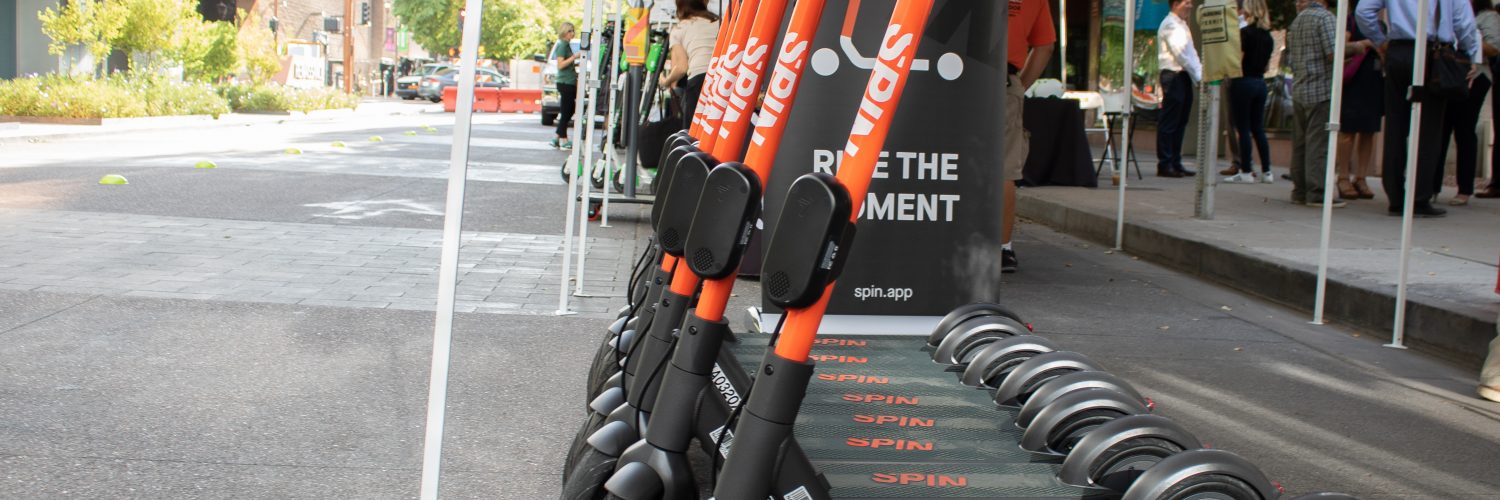
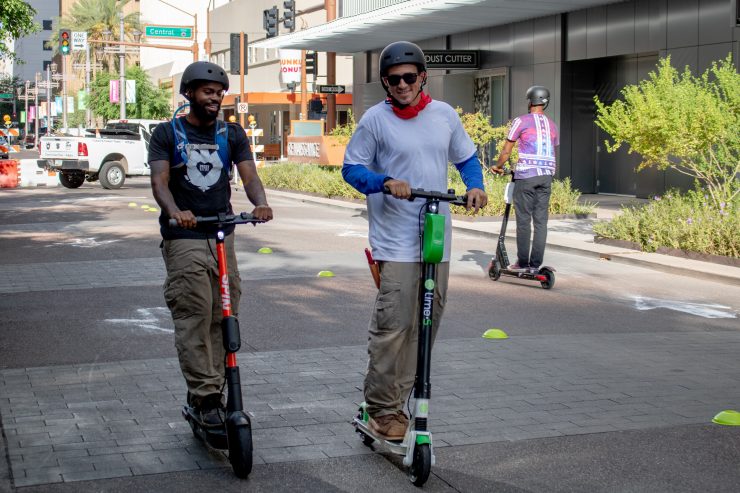
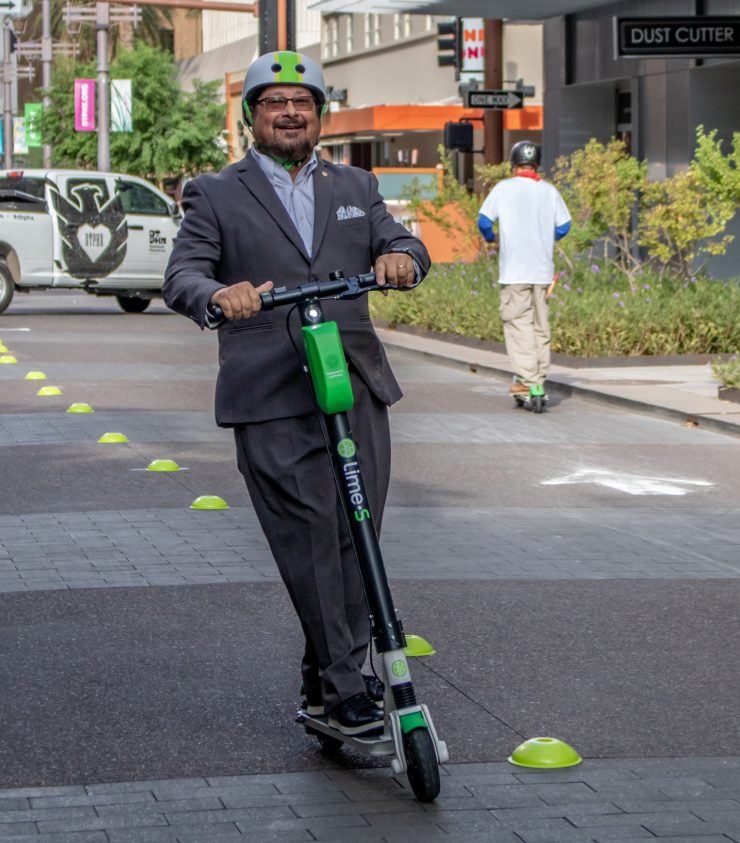
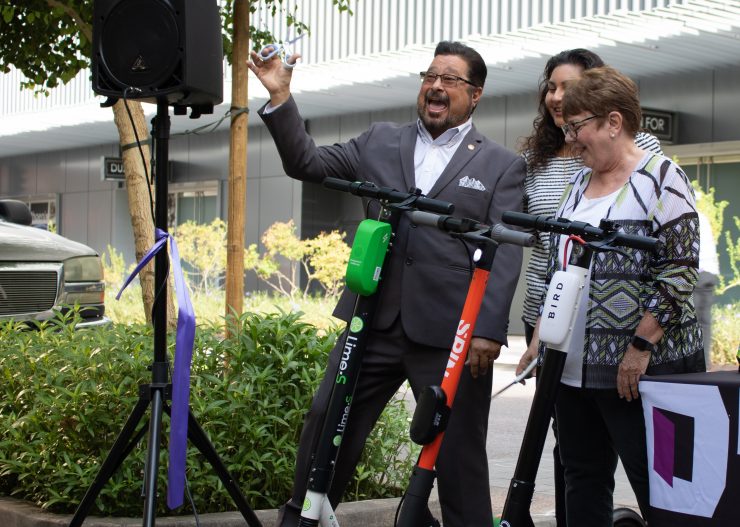
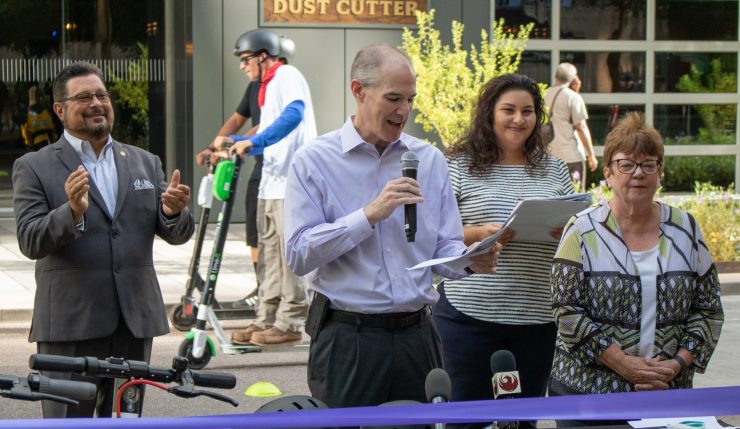














Add comment